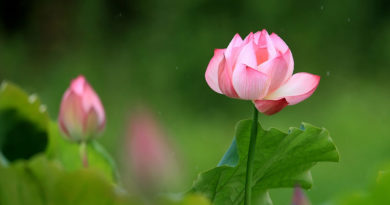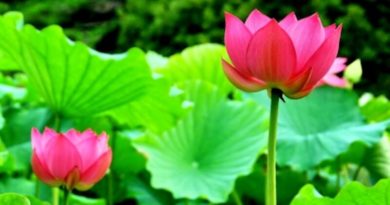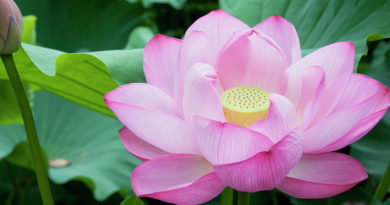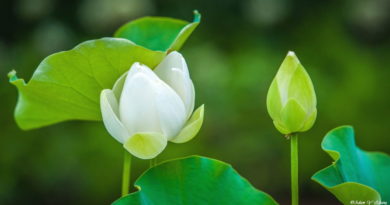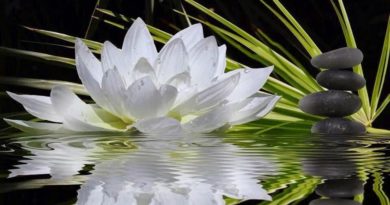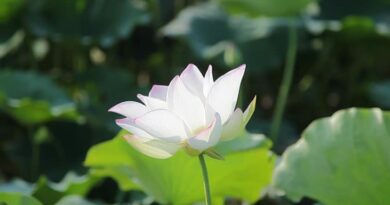SASANA ABROAD – SAN JOSE TO LOS ANGELES
MAIN CONTENT
SASANA ABROAD
SAN JOSE TO LOS ANGELES
Sayadaw with Dr. U Mya Aung, U Tun Kyi and U Khin Hlaing left San Jose for Los Angeles at 8:15 a.m. on August 5th by air. At 9:05 a.m. Sayadaw and the team arrived at the Los Angeles Airport where U Tin Htoon and U Mg Mg were waiting. The San Jose—Los Angeles Air line allows a passenger to buy a ticket for his companion. It is an unusual permission as no other airline makes such allowances. For this reason U Khin Hlaing could accompany Sayadaw to Los Angeles. Sayadaw and the team had lunch at U Tin Htoon and Daw Khin Than Aye’s house. U Tin Htoon told Sayadaw how he respectfully treated the Beneficial Aggamaha pandita Abhidhaja maharatthaguru Sagaing Shwe Hinthar Sayadaw on his visit to U.S.A. He also offered Shwe Hinthar Sayadaw’s travelogue to Sayadaw. The book was complete with excellent writing and photographs and inspired Sayadaw to write a similar one.
Although Sayadaw intended to write, no decision was made at that time. Due to the request by a Head-Mistress and also by the Chief-Editor of Myat Mingala magazine who wanted to print Sayadaw’s travelogue in the magazine, this book on the travels abroad is written.
Sayadaw gave dhamma discourses and instructions at the retreats at the Sundararama Brahma Vihara Monastery, Los Angeles.
The dhamma discourse on “The Four conditions difficult to attain” was preached from 8 a.m. to 9:30 a.m on 1356 (ME) the last waning day of Waso, “the Four conditions for Sotapanna and Twenty-four Types of Sotapanna”, from 8:30 p.m to 10:00 p.m on 1356 (M.E) the first waxing day of Wagaung.
Four conditions for Sotapanna and Twenty four Types of Sotapanna
The dhamma listeners sincerely wish to be sotapanna, who could close the door to apaya, in this very life. Is it true? (Yes, Your Ven. Sir). The reason why it is possible for you to be a sotapanna in this very life is, that you have the following four Conditions
1. You are a man though it is difficult to be one.
2. You are living though it is difficult to be alive.
3. You are listening to dhamma which is hard to listen to.
4. You exist in the presence of the Buddha’s sasana though it is difficult to be so.
One is certain to be a Sotapanna only when he has these four conditions in his continuity of consciousness. Therefore it is essential to practise to have these four conditions. The four requirements for this practice are:
1. Sappurisa sansevo – To take refuge in good teachers who can teach the noble dhamma such as satipatthana vipassana for the attainment of magga and phala.
2. Saddhammasavanmam – To listen to the noble dhamma such as satpatthana vipassana for the attainment of magga and phala.
3. Yoniso manisikaro – To have a disposition for kusala merits or a proper attitude.
4. Dhammanudhammapatipatti – To practise the dhamma which is adaptive to the nine noble dhamma, namely magga, phala and nibbana.
1. To take refuge in the noble teachers means to be under the guidance of the noble teachers who can preach and instruct you to become a sotapanna. The Buddha is the best teacher to take refuge in, during His time. However, during these days, the arahats are the best teachers. If the arahats are not to be found then it is the anagami; when anagami is not available, it is sakkadagami that you should take refuge in; if sakkadagami is nowhere to be found, it is to take sotapanna as the best teacher. When even sotapanna is hard to be reached, it is the best to take refuge in an individual who is practising vipassana meditation righteously, namely, araddhavipassaka.
2. To listen to the dhamma leading to the attainment of magga, phala and nibbana means to listen to the noble satipatthana vipassana dhamma which can send the diligent meditators to magga, phala and nibbana in this very life. Except Buddhas and Silent-Buddhas, there is no one who gains dhamma without listening to dhamma. Every disciple has to listen to dhamma in order to attain it. Even Ashin Sariputta, the bearer of the highest honour in wisdom, became a sotapanna only after listening to dhamma from Ashin Assaji. For this reason whosoever would like to be sotapanna in this very life should listen to dhamma.
3. To have a disposition for kusala merits is an important factor. Upon encountering various sense objects if one has no proper disposition, there develops unwholesome deeds.
Unwholesome deeds and, magga and phala are antithesis. The sotapatti-magga-nana and sotapatti-phala-nana develop only when there are wholesome dhamma in your conscious mind-continuity. Therefore, it is significant to have a proper disposition.
As soon as you get up in the morning, various sense objects come into contact with your eyes, ears, nose, tongue, body and mind. There upon lobha and attachment develop if you cannot establish a proper disposition when the sense contact is pleasant. Dosa and unpleasant feeling arise, if you have no proper disposition when unfavourable sense contact occurs. With unwholesome disposition such as lobha and dosa in your conscious mind, will you become a sotapanna? (No, Your Ven. Sir). That is the reason why you must have a proper disposition whenever you come into contact with a sense object. To develop a proper disposition, when you encounter good sight, sound, odour, taste and touch, is to reflect ‘I encounter pleasant sense objects now, because I have done wholesome deeds in my past existences.”
There will be no attachment to the pleasantness and the kusala merits will develop if you reflect, ‘In order to enjoy good benefits and to attain the sublime nibbana in the future, I must perform kusala deeds in this life.”
Is it because of the bad deeds or good deeds in your past life, that you encounter unpleasantness or unfavourable experiences in this life? (It is due to the bad deeds, Your Ven: Sir) Yes it is true. You will be able to bear the unpleasantness when you reflect. “These unpleasantness in this life are the ill results of the bad deeds in my past existences.” Can we overcome these unpleasantness or bad results by unwholesome deeds? (No, Your Ven: Sir) Then how and what to do? Pondering that the wholesome deeds are the only things that can overcome the bad results, so perform more and more wholesome deeds. In this way you gain more merits.
According to the ancient Sayadaw’s saying there is retribution for ill-deeds, however if we can develop good and proper impulsion or thought-moment, the result will be just the opposite. Those who aspire to be a sotapanna in this life, when experience good or bad conditions, one must be able to recollect in such a way to gain merits. In other words, it is to develop a proper disposition. If you can do so, you have the third requirement to be a sotapanna.
4. What are the practices which are adaptive to magga phala and nibbana? Whenever you give dana, you observe sila and meditate samatha, you always aspire that the benefits of these kusala deeds will be the attainment of nibbana. Therefore the offering of dana, the observation of sila and the samatha meditation, are the practices adaptive to the noble nine dhamma, namely magga, phala and nibbana. Nevertheless, the most adaptive practice is the satipatthana vipassana. There is no one who has attained nibbana without practising satipatthana vipassana. That is why one who aspires to be a sotapanna in this very life must definitely practise satipatthana vipassana.
Moreover, it is of utmost importance to practise under the correct guidance, otherwise you may not reach your most aspired goal.
Sayadaw will explain the correct methods of satipatthana vipassana according to the most Ven. Mahasi Sayadaw. There are three ways.
(1) Sitting practice
(2) Walking practice, and
(3) Noting the general bodily actions.
(1) Sitting practice
Under the proper guidance of Ven. Mahasi Sayadaw, a yogi approaches a quiet and peaceful place, sits comfortably, keeping his body straight and his head erect, closes his eyes and starts to meditate fixing the mind on the abdomen penetratively. When the abdomen rises gradually due to inhalation, note the gradual rising from the beginning to the end as ‘rising’, ‘rising’ without letting the mind wander. While thus noting the yogi should dissociate his mind from the shape of the abdomen as much as possible. He must note penetratively the phenomenon of pushing and rigidity from inside and to perceive it clearly. The shape of the abdomen is pannatti which is not to be noted. It is to note the phenomenon of pushing and rigidity which is paramattha.
Note ‘falling’, ‘falling’ from the beginning to the end when the abdomen falls gradually due to exhalation, without letting the mind wander off. While thus noting, dissociate your mind from the shape of the abdomen. Nevertheless, the gradual movement or shifting in the abdomen must be noted mindfully. The shape of the abdomen is the pannatti which is not to be noted in vipassana. The phenomenon of pushing and moving is to be observed and perceived, as it is paramattha
If you feel that these two points of mindfulness ‘rising’, ‘falling’ are not effective, add another and note ‘rising’, ‘falling’, ‘touching’. While noting ‘touching’, keep away the shape of the limb and body, but note the feeling of the heat and hardness of your bottom due to touching the floor or the clothes, If you still cannot concentrate with these three-point noting, add another one, ‘rising’, ‘falling’, ‘sitting’ and ‘touching’ when you are sitting you must not think of the form of your head, body, hands and legs at all, but you must realize that your body is taut with the force of air that has pushed you up into the sitting position due to your intention to sit. With about four notings, concentration will develop.
When you find that observation is good by two-points noting. ‘rising’ and ‘falling’ keep on the two-points noting; if it is three-points noting, ‘rising’, ‘falling’ and ‘touching’ then do not change it. If the concentration is gained by four-points noting, continue noting ‘rising’, ‘falling’, ‘sitting’ and ‘touching’. In vipassana meditation it is to observe the paramattha penetratively and to disregard pannatti as much as possible. Thereupon, there will be swift improvement and realization of dhamma. Moreover, it is important to note precisely at the present. These are the two essential factors, namely to observe paramattha penetratively and to be precisely at the present, in vipassana meditation.
Pannati is concerned with things that can be seen with the natural eyes and that can be touched and felt. Whereas, paramattha is the phenomenon which cannot be seen by the natural eyes, not to be felt and touched, but it is the phenomenon, which can be comprehended by conscious mind, such as the sensation of coolness, that of hardness, softness, pushing, tightness, stiffness, motion, cohesion seeping, pain, numbness, etc; Out of the two, it is to dissociate pannatti as much as possible, but to comprehend paramattha penetratively.
Motto: Disregard pannatti and attentively observe paramattha
It is required to observe precisely at the present, then only dhamma will be gained. The rupa and nama in the continuity of consciousness and corporeality of the dhamma listeners, function or manifest precisely at the present only. They no longer exist, if you observe them one second or a hair-width late. Thereupon you are noting what is not present, so no dhamma is gained. As rupa and nama manifest only at the present moment Lord Buddha had explained in the Pali Text, how to note Precisely at the present.
The rupa and nama manifesting in the continuity of consciousness and corporeality of the dhamma listener, exist nowhere in your body or khanda before they manifest. They disappear instantly after the manifestation and none of them is left in the khanda. They exist only and precisely at the present. It is just like a flash of lightning in the sky. The flash of lightning, due to the clash of two clouds in the sky, disappears immediately. No lightning is left in any of the clouds. The flash of lightning could not be found in any of the clouds before or after the lightning. Similarly, rupa and nama could not be found in any part of the khandha before or after their appearances and they exist only at the present moment of manifestation. That is the reason why the Buddha exhorted to note precisely at the present.
Rupa and nama of the past nor of the future do not exist because they no longer manifest. That is why rupa and nama of the past and future could not be observed. Lord Buddha discoursed in the Bhaddekaratta Sutta that only the present rupa and nama are to be observed. In order to remember it easily, the Ven. Mahasi Sayadaw has composed the following motto.
Motto: Do not recollect the past.
Nor think of the future.
Observe the rupa and nama.
Manifesting at the present without fail.
2. Walking Practice
In the same manner, while noting in the walking practice as, ‘lifting’, ‘pushing’ and ‘dropping’, the yogi should note precisely at the present and to observe and comprehend paramattha vividly. In this way, sooner or later the nature of dhamma will become lucid to the yogi. When noting “lifting” disregard the shape of the leg as it is pannatti. However, the gradual upward movement of lifting must be noted comprehensively, because it is the paramattha. It is also to note the continuity of lifting process at the present, as much as possible. If the yogi can note in this way he will be aware of the lightness in the gradual upward movement of the foot.
In the same manner the section of lightness is also vividly perceived in the gradual forward movement of the foot when the yogi can dissociate the shape of the leg, and note the forward movement precisely at the present. Thus the nature of the element of heat (tejo) and the element of motion (vayo) are realized when the yogi is aware of the lightness in lifting and moving for ward of the foot.
Motto: In te (Jo) and va (yo) the two elements lightness is apparent.
While noting dropping, the yogi will notice not only the gradual dropping movement of the foot but also the section of heaviness in it, if he can disregard the form of the leg and can comprehend the nature of the dropping movement. And also if he can observe precisely the process of that movement at the present. The awareness of heaviness is the realization of pathavi, the, element of extention and the element of apo, the element of cohesion.
Motto: In pa (thavi) and a (po), the two elements
Heaviness is apparent.
3. Noting the general bodily actions.
While at the hostel, as it is not the time for sitting or walking practice, the yogi has to note the general bodily actions beginning with the four main postures. Do not get up immediately after sitting practice or listening to the dhamma you will notice clearly the intention to stand up appears first if you attentively observe your mind. Then note, ‘intending to stand up’ ‘intending to stand up’ when the actual standing up action occurs note ‘standing up’ ‘standing up’. While thus noting disregard the shape of head, body, legs and arms as much as possible and take notice of the nature of the gradual upward movement attentively. If the yogi can note the intention to stand up, he realizes that he has gained two stages of insight himself. Is the intention to stand up as it is conscious, rupa or nama? (It is nama, Your Ven. Sir). Yes it is nama. Is the standing up action, which is unconscious, rupa or nama? (It is rupa, Your Ven. Sir) Yes, it is rupa. This knowledge of differentiating rupa and nama is Namarupa pariccheda Nana.
Due to the intention to sit, the yogi sits. Is the intention to sit the cause or the effect? (It is the cause, Your Ven. Sir) Yes it is the cause. Is the sitting action the cause or the effect? (It is the effect, Your Ven. Sir) Yes it is the effect. Thus the yogi gains the Paccaya pariggaha Nana as he can distinguish the cause and the effect.
Motto: The intention to stand up is nama,
the standing up action is rupa.
It is not ‘I’ or ‘you’ who stand up.
Just nama and rupa that stand up.
When the pair is lucidly perceived.
The purpose of standing up is achieved.
After standing up, when you are about to walk, do not start at once, just observe your mind carefully and you will be aware that the intention to walk appears first. Then note ‘intending to walk’, ‘intending to walk’. Note ‘walking, walking left foot forward’, etc. when the actual action takes place. Dissociate your mind from the shape of the head, body, legs and arms, however observe penetratively the nature of the forward gradual movement, stage by stage.
The yogi knows for himself that he attains two stages of insight by noting the intention to walk. Is the intention to walk, which is conscious, rupa or nama? (It is nama, Your Ven. Sir) Yes it is nama. Is the walking action, which is unconscious, rupa or nama? (It is rupa, Your Ven. Sir). The knowledge of differentiating nama and rupa is Namarupa pariceheda Nana. Because of the intention to walk, you walk. Is the intention to walk the cause or effect? (It is the cause, Your Ven: Sir) Are the walking actions the cause or the effect? (They are the effect, Your Ven: Sir) Yes, they are the effect. The knowledge to distinguish the cause and effect is the Paccaya parriggaha Nana which the yogi has gained.
Motto: The intention to walk is nama and
the walking action is rupa.
It is not ‘I’ or ‘you’ who walk
Just nama and rupa that walk
When the pair is lucidly perceived
The purpose of walking is achieved.
When you are about to stop after walking the intention to stop arises clearly two or three steps before stopping. Then note ‘intending to stop’ ‘intending to stop’. When you have actually stopped walking, note, ‘standing’, ‘standing’. While thus noting, the shape of the head, body legs and arms are not to be observed. Note attentively the nature of the rigidity due to the pushing because of the intention to stand.
The yogi himself realises that he has gained two stages of insight when he can closely and objectively observe the ‘intention’. Is the intention to stand which is conscious, rupa or nama? (It is nama, Your Ven. Sir). Yes it is nama. Is the standing behaviour, which is unconscious, rupa or nama? (It is rupa, Your Ven. Sir).Yes, it is rupa. The yogi has gained the Namarupa pariccheda Nana when he can distinguish between rupa and nama.
The yogi stands due to the intention to stand. Is the intention to stand the cause or the effect? (It is the cause, Your Ven. Sir). Yes it is the cause. Is the standing behaviour cause or the effect? (It is the effect, Your Ven. Sir) Yes, it is the effect. The knowledge of differentiating cause and effect indicates the attainment of Paccaya Pariggaha Nana.
Motto:
The intention to stand is nama, the standing action is rupa.
It is not ‘I’ or ‘you’ who stands.
Just rupa and nama that stand.
When the pair is lucidly perceived
The purpose of standing is achieved.
When you are going to sit from the standing posture, without sitting down quickly, observe your mind closely. You will find that the intention to sit arises first. Then note ‘intending to sit’, ‘intending to sit’. Note ‘sitting’, ‘sitting’ only when the sitting action actually takes place. Disregard the shape of the head body, legs and hands as much as possible. However, the gradual dropping down action must be observed and comprehended. The yogi knows for himself that he has gained the two stages of insight when he can vividly observe the ‘intention’. Is the intention to sit, which is conscious, rupa or nama? (It is nama, Your Yen. Sir). Is the sitting action, which is unconscious, rupa or nama? (It is rupa, Your Ven. Sir) Thus the yogi has attained the Nama rupa pariccheda Nana when he can differentiate rupa and nama. Sitting takes place because of the intention to sit. Is the intention the cause or the effect? (It is the cause, Your Ven. Sir). Yes it is. Is the sitting action the cause or the effect? (It is the effect, Your Ven. Sir) Yes, it is. Therefore the Paccaya pariggaha Nana is gained when the yogi can distinguish between the cause and effect.
Motto:
The intention to sit is nama, the sitting action is rupa.
It is not ‘I’ or ‘you’ who sit
Just nama and rupa that sit.
When the pair is lucidly perceived
The purpose of sitting is achieved.
When you are about to lie down after sitting observe your mind attentively. There upon you will perceive that the intention to lie down arises first. Then note ‘intending to lie down’, ‘intending to lie down’. Note ‘lying down’, ‘lying down’, only when the actual action to lie down takes place. While thus noting, dissociate your mind from the shape of the head, body, legs and. arms as much as Possible However, you must note Penetratively to perceive the phenomenon of the gradual lowering down movement If the intention is lucidly observed then the yogi has attained the two stages of insight. Is the intention to lie down, which is conscious, rupa or nama? (It is nama, Your Ven. Sir). Is the lying down action which is not conscious, rupa or nama? (It is rupa, Your Ven. Sir) Since he can differentiate nama and rupa, the yogi has gained the Namarupa pariccheda Nana. The yogi lies down because of the intention to lie down. Is the intention to lie down the cause or the effect? (It is the cause, Your Ven. Sir) Yes, it is the cause. Is the lying down action the cause or the effect? (It is the effect, Your Ven. Sir) Yes it is the effect. As he can differentiate the cause and effect, he has attained the Paccaya pariggaha Nana.
Motto:
The intention to lie down is nama,
The lying down action is rupa.
It is not ‘I’ or ‘you’ who lie down
Just nama and rupa that lie down.
When the pair is lucidly perceived,
The purpose of lying down is achieved.
Noting while taking food
General noting must be carried on while taking food. As soon as you see the food, note, ‘seeing’, ‘seeing’, note ‘reaching’, ‘reaching’, when you reach for the food, ‘touching’ ‘touching’, when you touch the food, ‘Preparing’, ‘preparing’, while arranging one mouthful of food; bringing’ ‘bringing’ when you bring the food to your mouth, ‘bending’, ‘bending’ when you bend your head; ‘Opening’ ‘Opening’ when you open your mouth, ‘putting’, ‘Putting’ when the food is put into the mouth, ‘raising’, ‘raising’, when you raise your head up, ‘chewing’. ‘chewing’, while chewing, ‘knowing’, ‘knowing’ as you recognise the taste; ‘Swallowing’ ‘swallowing’ as you swallow the food. This is how the late Ven. Mahasi Sayadaw noted while eating a mouthful of food. At the beginning the yogi may not be able to note every action. He may miss most of them. However he is not to be disheartened because he will be able to note almost all when his concentration becomes strong. At first note whichever action is distinct; if the reaching of hand is the most distinct action, note it, if the bending of the head is more prominent, then note it, if chewing is more vivid, note it. While chewing of the two jaws only the lower jaw moves and this is known as ‘chewing’, ‘chewing’. In vipassana meditation it is not only to note the graceful manners, but also the disgraceful manners too. You must note all your manners of discharging excrements and urine. The intention to discharge will appear first, then note ‘intending to discharge’, ‘intending to discharge’. Afterwards when the actual discharging (bodily manner) occurs, note ‘discharging’, ‘discharging’. If pain, aches and or numbness arise, note ‘pain’, ‘pain’, ‘ache’, ‘ache’, etc. Thus you gain vipassana merit related to sampajanna, when you observe the ungraceful manners of discharging excrement and urine.
Motto:
Discharging excrement and urine with mindfulness is sampajanna.
The atthakatha masters remarked that whosoever meditates continuously will gain the noble dhamma in any action or manner. A certain person who practises vipassana with a strong faith believes the dhamma can close the door to apaya and that he can attain nibbana. He can gain magga and phala by noting ‘walking’ ‘walking’, during the walking practice; he can gain magga and phala by noting ‘standing’, ‘standing’, while standing’, by noting, ‘sitting’, sitting’, while sitting, by noting ‘lying down’, ‘lying down,’ while lying down, by noting, ‘biting,’ ‘biting’, ‘eating,’ ‘eating,’ while taking fruits, by noting ‘eating’, ‘eating’, ‘chewing’, ‘chewing’, while eating food.
Motto:
The noble dhamma can be achieved by attentive observing.
While walking, standing, sitting, lying down, eating and chewing.
You would be a sotapanna when the mark is reached by practising under the right method which is adaptive to magga, phala and nibbana
Twentyfour types of sotapanna
How to calculate the twenty-four types of sotapanna will be explained briefly.
1. Three sotapanna according to the number of existences
2. Two sotapanna according to predominance
3. Four sotapanna according to practice
Motto:
Three sotapanna depending upon the number of existence
Two sotapanna depending upon predominance
Four sotapanna depending upon practice.
You will get six by multiplying the three according to number of existences with two according to predominance, then multiply, six by four according to practice. Thus there are twenty-four types of sotapanna.
1. Three sotapanna according to the number of existences.
(a) Those who attain nibbana by seven existences are known as sattakkhattuparama.
Motto:
Sattakkhattu parama is the one who attains nibbana by seven existences.
(b) Those who attain nibbana between two and six existences are known as kolankola.
Motto:
Kolankola is the one who attains nibbana by six existences.
(c) Those who attain nibbana in one existence are known as ekabija.
Motto:
Ekabija is the one who attains nibbana in one existence.
2. Two sotapanna according to predominance.
(a) One who practises vipassana meditation with faith (saddha) and becomes a sotapanna.
(b) One who practises vipassana meditation, predominated by wisdom and becomes a sotapanna.
There is a difference in attaining dhamma for the faith pre-dominated and wisdom pre-dominated meditators. However, they enjoy the bliss of dhamma without any difference. Both the faith pre-dominated and wisdom pre-dominated yogis practise vipassana meditation by noting ‘rising’, ‘falling’, ‘sitting’, ‘touching’, according to our benefactor Mahasi Sayadaw. At the beginning, before the development of concentration, nothing is very distinct, though they are noting ‘rising’, ‘falling’, ‘sitting’, ‘touching’. He regards ‘rising’ is his abdomen,’ ‘noting’ also is done by him. Similarly he perceives that ‘falling’ is his abdomen, ‘sitting’ and ‘touching’ are also done by him, and noting is done by him too. He could not perceive them differently but as a whole. By dint of repetitive noting, the concentration is strengthened and the yogi perceives separately the ‘rising’ as one entity, separate from the noting; so also he begins to differentiate the ‘falling’, ‘sitting’ and ‘touching’ as separate entities from noting. Thus the wisdom predominated yogi, who is going to be a sotapanna can distinguish ‘rising’, ‘falling; ‘sitting’ and ‘touching’ as rupa, the unconscious matter, and the noting mind as nama, the conscious mind.
A person who is going to be a faith-predominated sotapanna could not perceive rupa and nama distinctly. However, he sees light as small as glow-worm while meditating. Sometimes his body is not vividly seen, but only the ‘rising’ and ‘falling’. He can note only the middle of the ‘rising” and ‘falling’, but the beginning and the end are not apparent. These are some of the characteristics of Namarupa pariccheda Nana. Unlike wisdom-predominated would-be sotapanna he could not differentiate nama and rupa distinctly. Thereupon he loses heart thinking that he is not going to attain dhamma. He should not be disheartened, for a faith-predominated person will certainly be a sotapanna one day.
There is no difference in enjoying the bliss of sotapatti-magga and sotapatti-phala by the faith-predominated and wisdom-predominated sotapanna.
3. Four sotapanna according to practice.
(a) Dukkhapatipada dandha bhinana— a person who has to practise with strain and stress and is also slow in gaining dhamma.
(b) Dukkhapatipada khippa bhinana — a person who has to practise with strain and stress but swiftly gains dhamma.
(c) Sukhapatipada dandha bhinana — a person who practises with ease, however slow in gaining dhamma
(d) Sukhapatipada khippa bhinana — a person who practises with ease and also swiftly gains dhamma.
The cause of the differences among the four sotapanna according to practice, is whether they have practised samatha and vipassana meditation in their past existences Those who have practised neither samatha nor vipassana meditation in their past existences, encounter difficulties in their practice to become a sotapanna and are also slow in attaining it. Those who have practised only vipassana but not samatha meditation in their past existences, find difficulties in their practice to become a sotapanna but swiftly gain dhamma. Those who have practised samatha only but not vipassana meditation in their past existences, practise dhamma with no difficulties, however they are slow in gaining dhamma. Those who have practised both samatha and vipassana meditation in their past existences, have no stress and strain in practising vipassana meditation, moreover they swiftly gain understanding of the dhamma.
Special attention for the two with slow gain in dhamma.
Out of the four sotapanna according to practice, how should the one, who is slow in gaining dhamma and also has difficulties in practice, contemplate dhamma? He should be specially ‘patient’. Stress and strain in his practice is due to vedana. If he is not patient and changes position every time, evidently he will be slow in gaining dhamma ‘Patience’ accordingly, is the major factor in contemplation. The saying ‘Patience begets nibbana’ is most appropriate and beneficial in meditation. Noting with forbearance will calm down the mind and develop concentration. There upon vipassana wisdom will arise leading to the attainment of sotapanna.
In ancient times, there were numerous instances, related to the realization of nibbana due to patience. At one time, a monk, residing at the Cittala Mountain, meditated the whole night. In the morning he suffered a serious pain due to wind trouble in his stomach. As he could no longer bear the serious pain he started rolling from side to side. An elder monk Pintapatika reminded him, ‘A monk must be patient’. There upon the suffering monk said ‘Sadhu!’, meaning that he would obey the elder’s admonishment and stopped rolling from side to side. He forbore the painful wind trouble and noted the vedana. Then he passed away after attaining anagami. He may have not realized nibbana if he had not been patient.
In vipassana meditation how should a yogi practise if he is slow in gaining dhamma, though he could note peacefully and comfortably? He must emphasize on attentive and penetrative noting, since his slow gain in dhamma is due to lack of attention and penetrative noting. For this reason he must note right at the present, respectfully and penetratively so that he can comprehend paramattha. For instance, in noting ‘rising’, you should observe attentively the gradual rising movement due to in-breathing, from the beginning to the end then only the noting will be precisely at the Present. Moreover, you must also Penetratively comprehend the paramattha, i.e. the phenomenon of tautness and tightness.
By virtue of continuous noting the concentration is strengthened and you will be aware of one stage of becoming and dissolution and an other stage of becoming and dissolution due to the interruption of wind.
Thus impermanence, anicca is realised by comprehending one dissolution after another, dukkha is realised by the awareness of suffering due to successive becoming and dissolution, anatta or non-self is realised upon seeing that there is no control over the torture of sufferings which happen automatically. When anicca, dukkha and anatta, the three characteristics, are well comprehended, one can become a sotapanna.
After listening to the dhamma discourse on ‘The four conditions for sotapanna and the twenty-four types of sotapanna’, may you all be able to practise accordingly and thereupon soon be able to acquire your most aspired noble dhamma, the cessation of suffering of whatsoever nature and thus attain nibbana immediately and with easy practice.
Sadhu! Sadhu! Sadhu!


